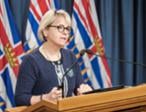The Bella Centre is awash with material underscoring the importance of the climate discussions here. Brightly coloured brochures are everywhere, displaying grim images of the rising toll of drought on pastoral peoples and the animals that sustain them, the impact of rising sea levels on small island states, melting ice caps, increasing ocean acidification and the impact of industrial livestock production.
There are thick tomes from public policy organizations and research papers from organizations like the International Energy Association and the Met Hadley Centre, a lead climate research agency. There are interactive displays, high-level briefings and climate action theatre.
The NGO (Non Governmental Organization) press briefing room is in constant use. Yesterday, the World Conservation Union released a list of 10 species at risk from climate change, including ringed seals and leatherback turtles, salmon, clownfish and koalas.
Every surface is covered with flyers, reports and negotiation updates.
There are thousands of people inside the complex and thousands more outside. Yesterday's wait for those not registered was as long as nine hours. Today, the Metro train didn't stop at Bella Centre where the talks are being held because of the crush of people gathered there. Accessing the summit meant getting off at the stop before or after and being prepared to wait after reaching the centre on foot. There are 35,000 people registered and room for only 15,000 inside. More will come as world leaders and their entourages arrive over the next three days. NGO's have been issued a percentage of secondary passes to stem the flow. Only observers with a secondary pass are allowed in. Today that number is 7,000. On Friday it will be 90.
Inside the conference rooms, negotiators are working furiously to find a way forward. U.S.-led developed nations came to Copenhagen wanting a new agreement, and developing nations came wanting to expand the Kyoto framework -- a legally binding agreement that commits developed countries, but not poor developing countries, to specific reduction targets.
Small island states want global warming targets that will save their countries from rising sea levels and they want larger developing countries to commit to reduction targets too. They also want to target a year for global emissions to peak.
Larger developing countries are willing to reduce emissions relative to GDP, but say that a cap will bind them to poverty. Developed countries want larger developing nations to allow verification of emissions. These booming nations -- countries like India and China -- are not amused. Developing countries as a whole want enough funding to enable them to carry out mitigation and adapt to climate change and are calling for stronger targets from the U.S. The EU has committed to 20 per cent reduction by 2020 and would go to 30 per cent, if there is a strong agreement in Copenhagen.
Canada has put forward a target that equates to a three per cent reduction from 1990 levels. While this is similar to the U.S. target, an analysis from PowerUp shows that Canada's climate action plan doesn't measure up. Germanwatch's Climate Change Performance Index listed Canada as one of the top 10 global emitters with the distinction of having the most greenhouse gas emissions per capita.
Commitments made by the 192 countries in the weeks leading up to the discussions here will not meet the scientific targets outlined in the 1997 Intergovernmental Panel on Climate Change report. The report calls for a 25 to 40 per cent reduction in greenhouse gas emissions by 2020 and 80 per cent by 2050 in order to avoid a catastrophic rise in global temperature. While this 2020 target was included in Friday's text, today's version has the numbers stripped out while negotiations continue.
Africa walked out of the talks yesterday, but was back in later in the day. Some observers say that success here depends on the next few hours of negotiation.
Organizers are planning a demonstration tomorrow at the Bella Centre to show world leaders that people from all over the globe want success in Copenhagen. Given the number of people that have already flooded the streets of Copenhagen, there's a good chance the Metro won't be stopping at the Bella Centre station tomorrow either.
Charley Beresford, executive director of the Columbia Institute, arrived in Copenhagen December 9th, where she is observing the climate change discussions at COP15. Parties to the United Nations Framework Convention on Climate Change have met annually since the establishment of the UNFCCC in Rio de Janero in 1992. The meetings are called a Conference of the Parties and the Copenhagen meeting is the 15th . From December 7th through 18th, the world is focused on COP 15 in Denmark, looking for a global deal on climate change following the Kyoto agreement, which runs out in 2012.










What have we missed? What do you think? We want to know. Comment below. Keep in mind:
Do:
Do not: